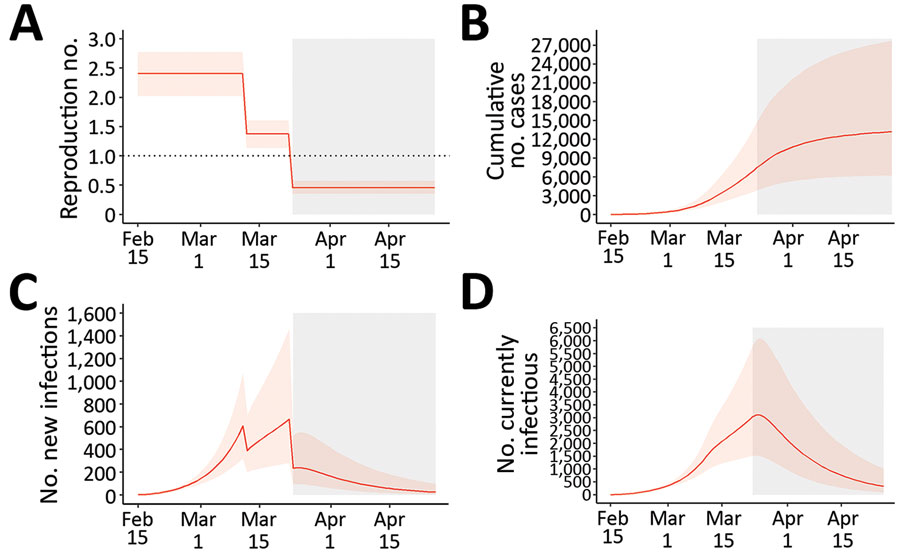Volume 27, Number 2—February 2021
Research
Effects of Social Distancing Measures during the First Epidemic Wave of Severe Acute Respiratory Syndrome Infection, Greece
Figure 4

Figure 4. The first wave of the coronavirus disease epidemic in Greece (February 15–April 26, 2020), estimated from 1,000 susceptible-exposed-infectious-recovered (SEIR) model simulations. A) Effective reproduction number; B) cumulative number of cases; C) new infections; and D) number of infectious persons by date. Orange lines represent the median estimates, and the light orange shaded areas indicate 95% credible intervals. Gray areas indicate the period of restrictions of all nonessential movement in the country (i.e., lockdown).
1These senior authors contributed equally to this article.
Page created: December 14, 2020
Page updated: January 23, 2021
Page reviewed: January 23, 2021
The conclusions, findings, and opinions expressed by authors contributing to this journal do not necessarily reflect the official position of the U.S. Department of Health and Human Services, the Public Health Service, the Centers for Disease Control and Prevention, or the authors' affiliated institutions. Use of trade names is for identification only and does not imply endorsement by any of the groups named above.